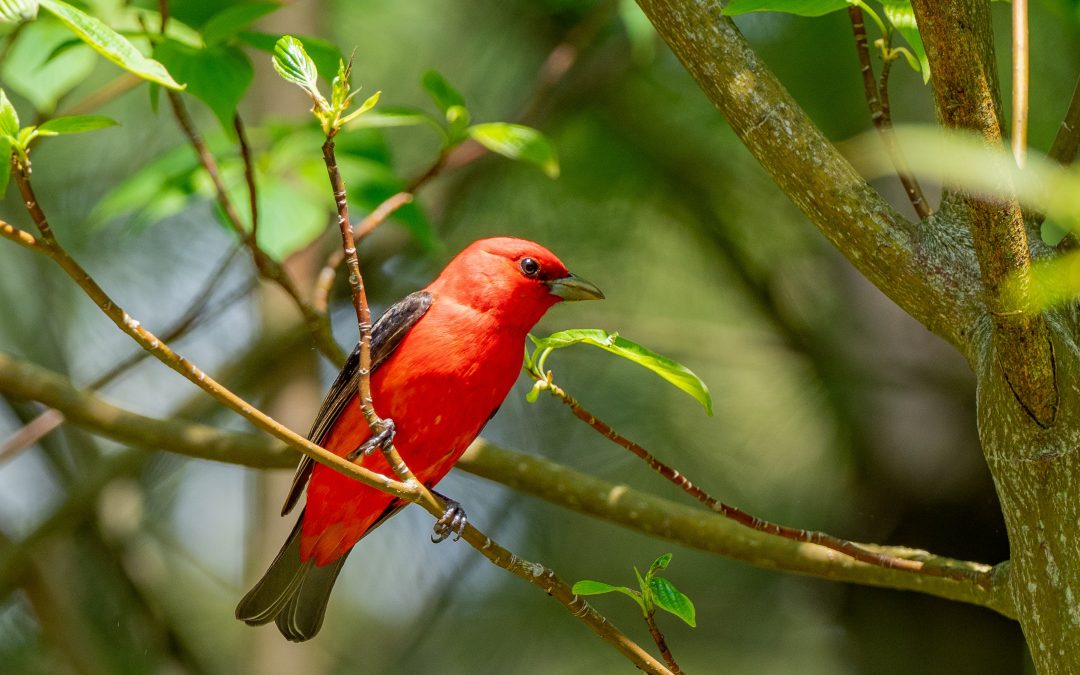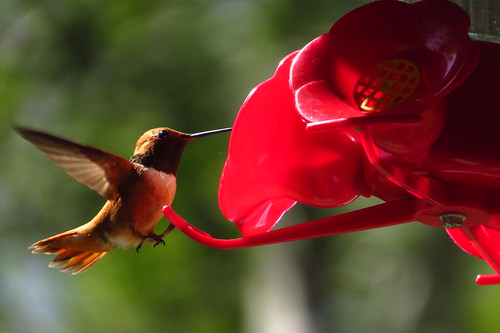If you want the best views of birds, then you need the right birding optics. These primarily include your binoculars and spotting scope.
You’re better off spending a little more money to get the best bird watching equipment that’s just right for you. If you don’t, you’ll be wasting a lot of time struggling to get a good look at that particular bird that you’ve been searching for.
Bad spotting optics will leave you feeling dissatisfied with your bird watching experience. Let’s start then, with your binoculars.
First, your binoculars. And this should not be one that you borrow from someone else. Each person has a different set of requirements in regard to how the binoculars feel in their hands–the weight, the touch, how steady they are in that person’s hand. So what will work for your friend may not work for you. You may need something lightweight. So invest the money to buy yourself a pair.
Buy waterproof binoculars that will prepare you for any changing weather conditions because these binoculars are sealed. This will prevent lens steaming; no water vapor can form inside. When shopping for binoculars, you can recognize these types by the words “nitrogen purged” or “nitrogen filled” on the packaging.
Test the binoculars before you buy, especially if you wear glasses. Better to get binoculars with long eye relief. This feature is recommended whether you wear glasses or not. And pay particular attention to the way the eye cups fit. Check for magnification and image quality as well. A 10 power is generally recommended. Spend some time surfing the web for birding binoculars reviews.
Now on to scopes. Your spotting scope takes you beyond the reach of the average binoculars. That is, it will extend your view for longer ranges than the binoculars can cover. Popular opinion is that the angled scope is better for birding, simply because it saves you the time adjusting a straight-through scope when the object of your view is in sight. Essential to a good scope is the aiming device that will allow you to find your birds quickly.
As with your binoculars, the spotting scope should be nitrogen filled so the lens won’t fog up and they should be lightweight. Keep in mind that you will be carrying this equipment around for long periods of time.
Remember, the success or failure of your birding expedition depends a lot on your selection of birding optics.
Binoculars for Birdwatching
If you’re an avid birding enthusiast, you know how important it is to have suitable birding binoculars. So you must select the one that’s just right for you. And don’t go thinking you can borrow your friend’s.
If you’re serious about birding you need to invest the time to finding your own binoculars that will work to your advantage. Everyone is different, and binoculars that are appropriate for someone else may not be best for you.
For example, the other person may prefer a larger pair of binoculars so they may own full-sized binoculars. You, on the other hand, may want more compact binoculars; you may feel more at ease with something smaller and not as heavy. So for your best birding, you should have bird watching binoculars that are lightweight and easy to hold because you’ll be carrying them for many hours at a time. Therefore, they should be of minimal weight and size–comfortable enough for you to carry.
Yet your binoculars should also be sturdy enough to withstand years of constant use (that is, if you’re at all serious in your birding and intend to pursue this thrilling past time).
To get the most from your birding experience, you’ll want binoculars that will allow you to see your subject without any glare; you want to make sure you get clear, crisp images. So will need binoculars that focus properly. If your binoculars are not correctly focused or are out of alignment, you can experience dizziness or even eyestrain. It’s important, therefore, to calibrate your binoculars before you start your birding experience.
What else should you take into consideration for your binoculars for bird watching? Well, they must work well in dim light. Your binoculars should be able to display delicate details as well as bright images with good contrast and accurately reveal subtle colors.
Keep in mind, too, that if you wear glasses, when you’re buying binoculars you should test them with your glasses on. You will need binoculars that will accommodate your glasses—one with long eye relief that will allow you to see the entire picture in view with your glasses on.
It’s therefore imperative that you try your birding binoculars before buying. Make sure the fit is right for you.
Choosing the Best Scopes for Birding
The purpose of the birding scope is so that you can see more details of the bird you’re viewing. You’ll be able to expand and enjoy that sight much more because the scope takes you beyond the range of typical binoculars. So yes, you do need one—if you’re a genuine birding enthusiast.
As with binoculars, the bird watching telescope should be lightweight and easy to carry. And to help you find your bird more quickly, it should have a good aiming device. This is where you have a choice of the straight scope or the angled scope.
Most bird enthusiasts prefer the angled over the straight-through scope for bird watching primarily because you can rotate the angled scope on its mount thereby giving you a wider view of the bird in sight. But with the straight spotting scope you’re looking straight at the bird. You’re facing the direction of the object you’re looking at. When the bird goes into flight you’re left only with time on your hands—and not enough of it to adjust your equipment quickly enough.
Since you can rotate the angled scope you can look from side to side or down into it. It’s easier for you to look up as opposed to getting down on your knees or contorting yourself to make yourself fit more to the scope’s direction.
Let’s say, for example, that you caught sight of a Rufous Hummingbird in a tree. You have a straight birding scope. First of all, the trouble you’d initially have mounting a straight-through scope high enough to get a good look at your little beauty was challenging. And again, the tripod you have may not even reach that high. However, with an angled scope, all you’d have to do it quickly rotate the scope and you wouldn’t miss the sight of those gorgeous tailfeathers.
Another advantage of the angled bird spotting scope is that it’s more user friendly for people of different heights. There’s no need to adjust the height of the scope to accommodate people of less than average height. You simply rotate the angled scope.
And yes, you can share your scope—your angled scope, that is. Because of its flexibility of adjustment, you, your friend, your friend’s friend—tall or short—can share your angled birding scope. All you have to do is set it and almost forget it–just rotate the scope so that the eyepiece is at the angle each person wants.


